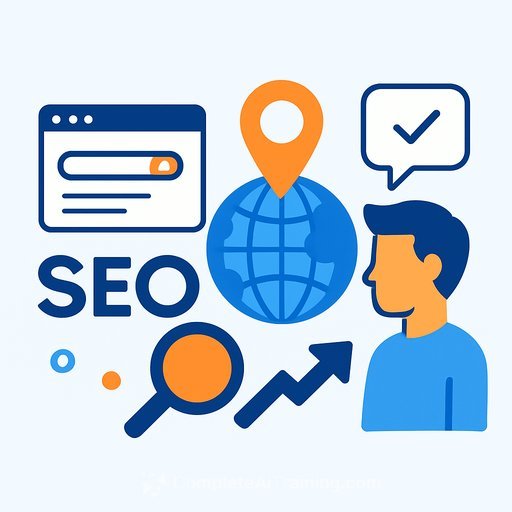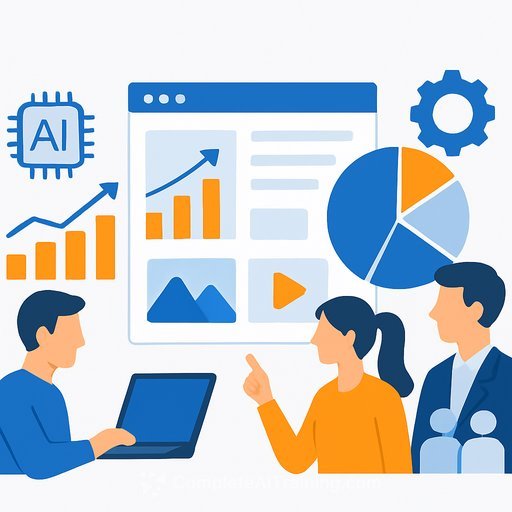AI and GLP-1s: The two forces transforming medical marketing
Ask any health marketer what's top of mind right now and you'll hear the same two themes: AI and GLP-1s. One is changing how we plan, create, and distribute. The other is rewriting demand, access, and media spend across obesity care.
Here's the concise playbook from this week's podcast conversations - distilled into what you can use today.
AI: What matters now (and what to do about it)
- Optimize for more than Google: It's no longer a single-engine game. Generative and answer engines pull from multiple sources. Treat visibility like a portfolio problem across at least eight major engines.
- Fix "AI says we're dead" before it spreads: Teams are seeing small blogs or outdated profiles get scraped into AI answers. Counter with a fast bundle: a clear FAQ that states the fact directly, updated press coverage, and structured data on key pages.
- Your About page = your AI briefing doc: Spell out what you do in plain language. Include categories, products, conditions served, leadership (with up-to-date roles), and common aliases. Assume the engine knows nothing.
- Measure competitive presence in AI answers: Track how you and rivals show up across engines. Identify "surprise competitors" that AIs frequently surface. Prioritize fixes for the queries that drive revenue.
- Earned media matters more: AI leans heavily on reputable coverage. Secure high-quality placements to reinforce accuracy and authority.
- Kill the AI-slop pitch: Editors can spot templated emails a mile away. Ditch the overuse of em dashes, clichés, and long intros. Lead with the angle, proof, and why it's timely.
- Use visual AI with intent: Great for illustrating complex concepts or prototypes. Keep real people real - headshots and leadership photos should be actual photography.
- Expect agentic workflows to spread: More teams will move from "co-pilot" prompts to chained, automated tasks for research, analysis, QA, and draft assembly.
Technical housekeeping worth doing this quarter: audit facts across your domain, refresh leadership bios, align product naming, add schema to key pages, and ensure earned media links to the right assets. Also revisit your paywall strategy for AI visibility - consider controlled unpaywalling of select evergreen content to improve how engines summarize your brand.
If you're skilling up your team on AEO, agent workflows, and practical prompting, see: AI Certification for Marketing Specialists and Courses by Job.
GLP-1s: Market update, media behavior, and next steps for marketers
Demand for GLP-1 therapies isn't slowing. Two headlines from the episode matter for brand and agency plans:
- Deal momentum: Pfizer secured obesity developer Metsera after a back-and-forth with Novo Nordisk. The race to expand GLP-1 portfolios is intensifying.
- Access shift: The White House announced a drug pricing deal with Novo Nordisk and Eli Lilly that enables Medicare and Medicaid coverage for GLP-1s at about $250/month, with a $50 copay for beneficiaries. Eligibility is targeted, but it's a clear signal that coverage is widening.
Who qualifies under the new coverage (as discussed)
- BMI > 27 with pre-diabetes or established cardiovascular disease
- BMI > 30 with uncontrolled hypertension despite treatment, or heart failure
- BMI > 35
There's also growing confidence in oral GLP-1 pills, with expectations they'll begin to replace many injections by early 2026. Convenience will push adherence up and expand addressable demand.
Advertising reality check
- By mid-November 2025, GLP-1 brands spent an estimated $672.1M on national linear TV, driving 34.3B impressions - already surpassing 2024's full-year $535.3M.
- If GLP-1s were a single category, they'd rank #8 by national TV spend - just behind theatrical movies and streaming services.
- Spend concentrates on the big four broadcast networks and live sports (NFL, MLB, men's college basketball, NBA). College football was the lone slight year-over-year dip.
What brand and agency leaders should do next
- Plan for access tiers: Messaging should reflect who qualifies today, what's coming (orals), and how to get started. Build dynamic creative and media rules to match coverage by segment.
- Balance DTC and HCP flows: Pair high-reach TV and sports with HCP education, eligibility tools, and clear next steps. Route consumers to coverage checks and care pathways.
- Leverage retail and DTC platforms: Partnerships like Lilly Direct x Walmart are expanding pharmacy access. Integrate retail media, clinic finders, and refill support.
- Prepare for scrutiny: Keep claims tight, risks visible, and support programs front and center. Add content for common questions: outcomes, side effects, cost, supply, adherence.
- Use MMM + incrementality, not just last-click: TV and live sports drive consideration. Prove it with geo tests, audience splits, and post-exposure uptick in eligibility checks and starts.
- Creative that respects the moment: Consumers want sustainable outcomes, not hype. Focus on health improvements, coaching, and adherence support - without overpromising.
Quick checklist you can run this week
- Audit how your brand appears in the major AI engines for top queries. Capture competitors shown and fix the biggest misses.
- Rewrite your About page to teach AI the essentials. Add schema, FAQs, and current leadership.
- Secure two new earned placements that state your core positioning in plain language.
- For GLP-1 marketers: align media, onsite flows, and CRM to eligibility rules today - with a path for oral therapies tomorrow.
- Review all outreach for "AI-slop" tells. Send only pitches an editor would forward to a colleague.
Keep your team current
If you need structured upskilling on AEO, agent workflows, prompt systems, and measurement, explore: AI Certification for Marketing Specialists and ChatGPT training resources.
Your membership also unlocks:






